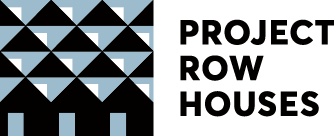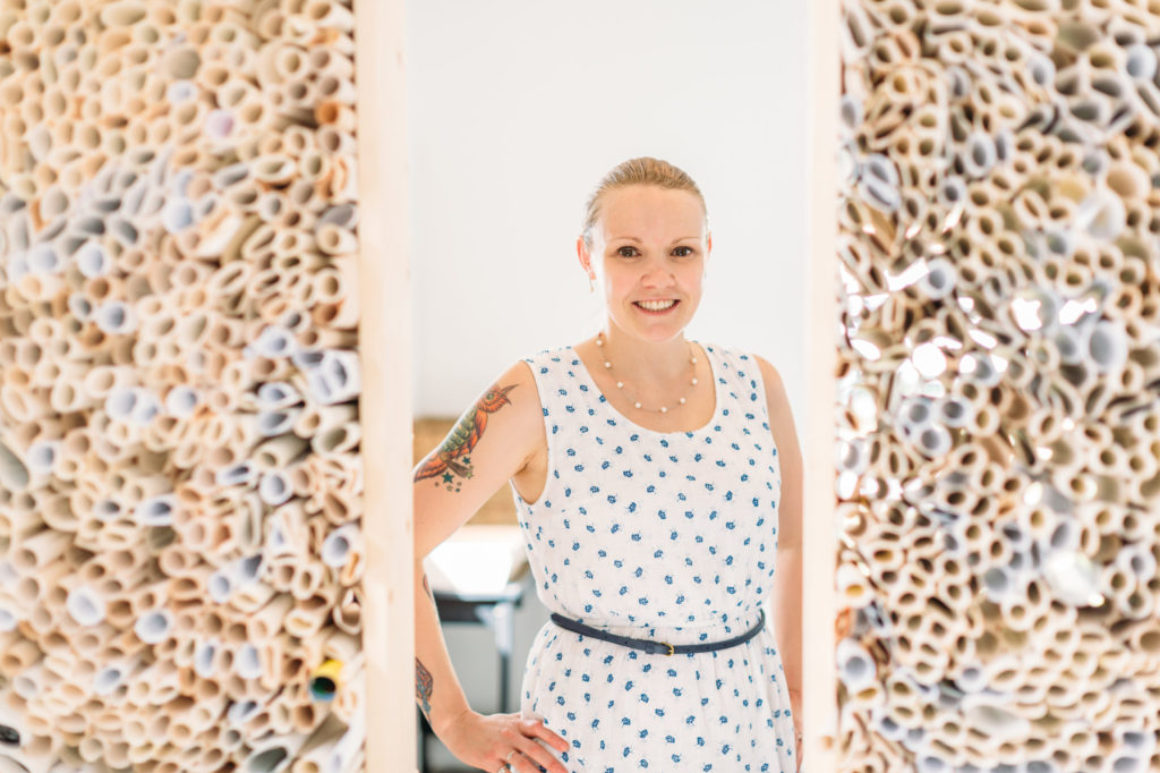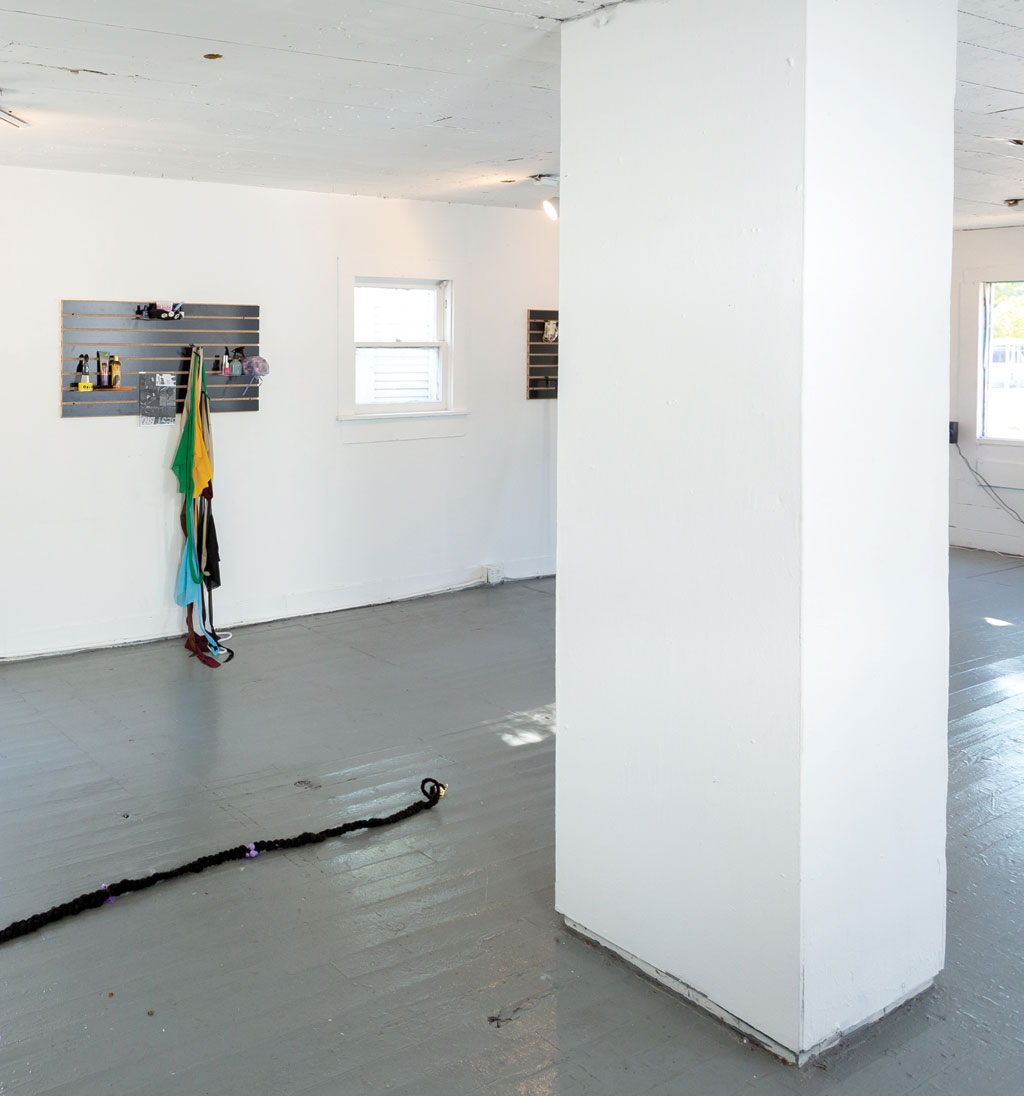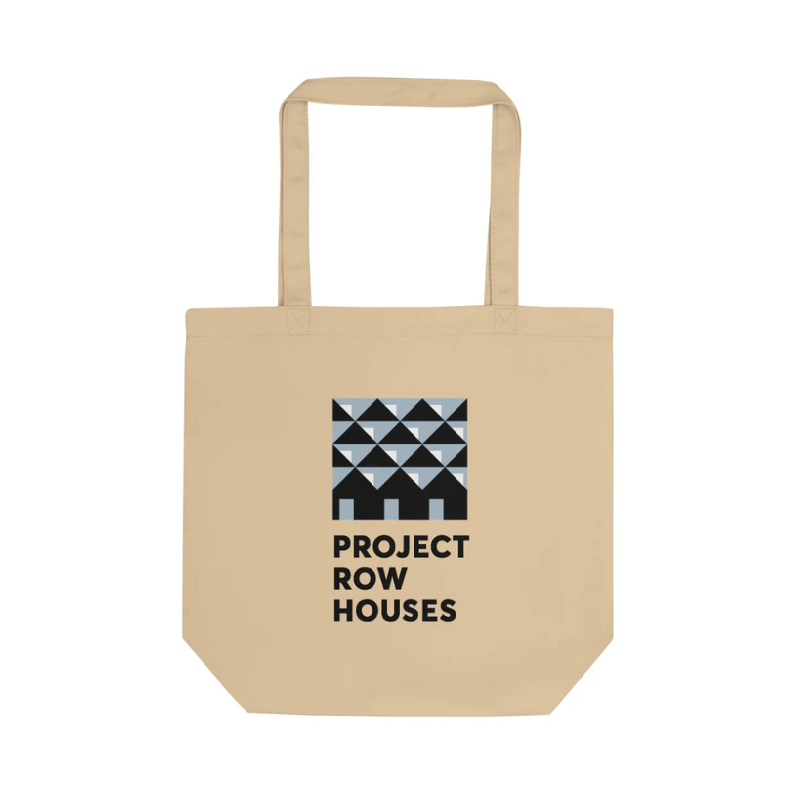Narrow Chatter
Summer Studio Work-in-Progress: Devon Grigsby
by Stephanie Cheung, Photos by Stephanie Cheung
A “wall” might be a word one could use to name Devon’s work in House 2515, but the four letters fall short in describing what it really is. From afar, the cork-color partitions resemble honeycombs. On a closer look, the floor-to-ceiling structures are made up of thousands of paper tubes, painstakingly rolled and stacked up, all by hand.
The monumental piece by the sculpture senior at the University of Houston is an extension of an earlier work titled Doorway, which was an expression of the two sides of religion. Using a similar construction method, with book pages rolled into tubular fillings in architectural spaces, the present work, Narrow Chatter, addresses communication as a subject matter. Devon, who calls herself “anti-social media” and does not have a Facebook account, is concerned about the state of human communication in an age of faceless texting and emails. In this context, the “walls” reflect the barrier in contemporary communication, and varying degrees of comprehensibility when one gets closer or farther away.
From a large quantity of donated books, Devon has selected a range that is especially relevant to what shapes thoughts in our mind. Pages from books on religion, politics, race, literature and art, together with those from textbooks, study guides and children’s books are jumbled up and become an illegible mass. “Text on a page can be like a jumble of words,” says Devon about the book analogy, “reading is like listening to the writer’s mind.” Leafing through a book, however, is less and less an everyday experience, so as the tactility of face-to-face communication.
“I haven’t counted how many books I have used.” The scale of the project, notwithstanding the lightness of the material, has compressed tubes at the structures’ bottom and filled the air with a hint of old paper. Like genuine communication, the work requires tremendous time and patience from more than one person. Devon’s family is all there for her: Some of the donated books were sourced by her mother; her father and husband help with the rolling and assembling; even her young daughter has a share in putting the paper rolls in boxes.
The concerted efforts of Devon and her loved ones will fill the frames before the exhibition opens, but one narrow section will remain unfinished. This part will be completed by the audience. On a table at the far back, visitors can find sheets of paper. Before they make a roll, they are invited to write “their hopes and positive messages.” Devon is prescriptive in this instruction. “Our media, politics, etc. today have so little to do with love and caring. This is to fill this gap.” When Nicolas Bourriaud theorized relational aesthetics, his imperative was “to fill an interstice.”
About Stephanie Cheung
Stephanie Cheung is a Hong Kong based curator and writer. She is Lead Curator of the non-profit Make a Difference Institute, an Asian platform dedicated to building a creative civil society. With a fellowship grant from the Asian Cultural Council, she is currently researching on socially engaged art in different cities in America.






